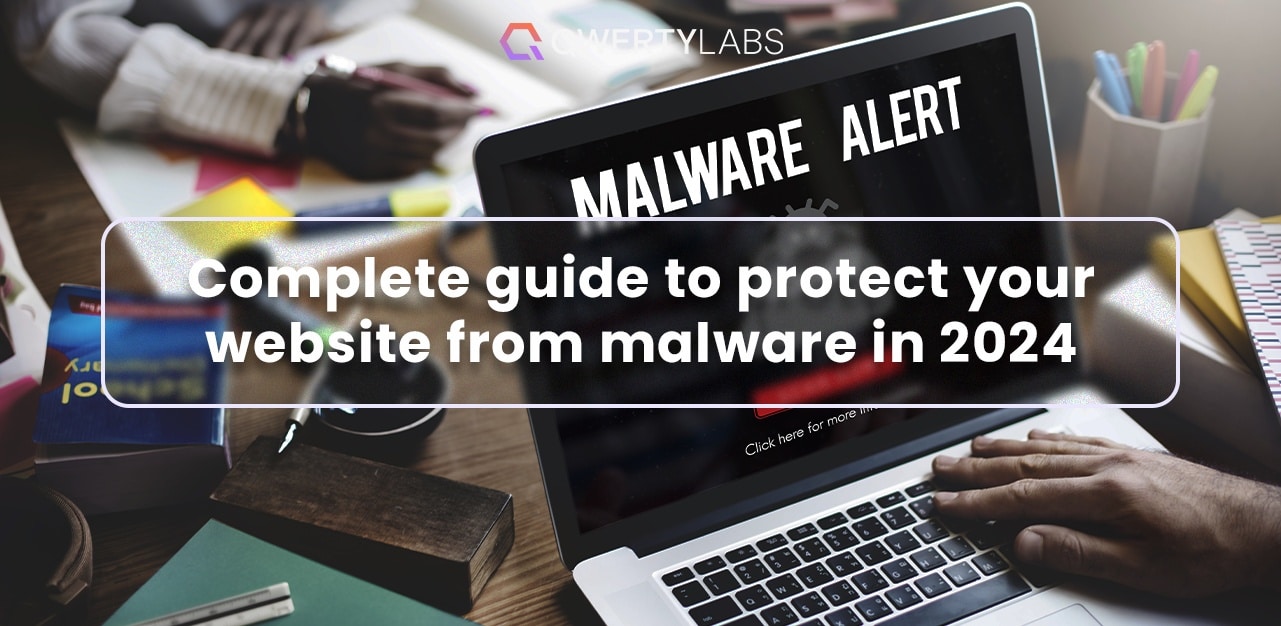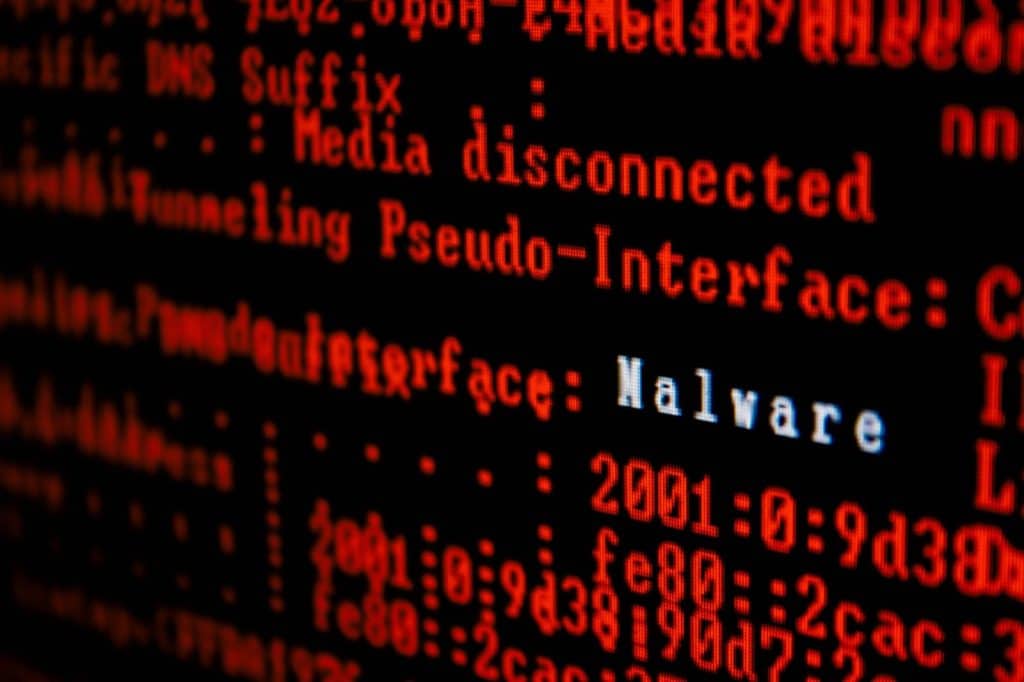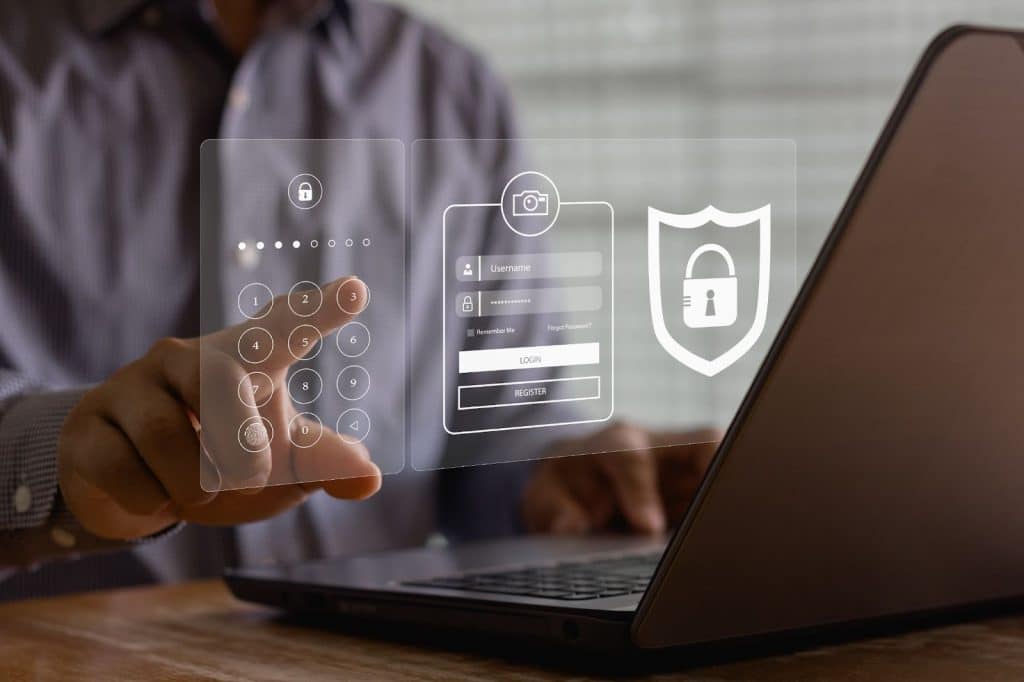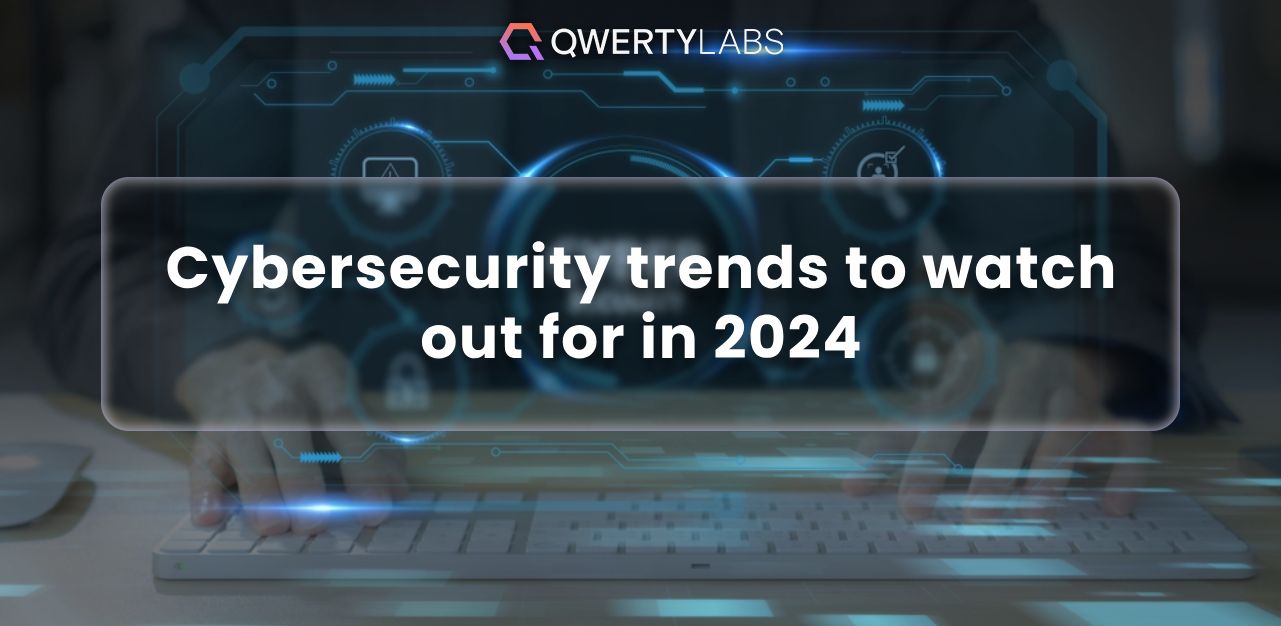Engage your audience with the right brand event marketing strategy. Discover tips and tricks to create impactful events with QWERTYLABS.

With cyber threats constantly evolving and hackers becoming smarter, preventing malware is more critical than ever. Websites are prime targets for these malicious programmes, and a single attack can cause chaos on your website and its visitors. That’s why it’s crucial to take proactive steps to prevent malware from entering your system in the first place.
Here, at QWERTYLABS, we equip you with the knowledge to safeguard your brand in cyberspace. By learning about malware, its impact, and valuable protection techniques, you can build a strong defence and ensure your website stays malware-free.

Malware, short for malicious software, is an umbrella term for any program or code designed to damage your device, server, or network. This includes an array of digital threats, from viruses that spread like wildfire to spyware that silently steals your data.
Malware can disrupt your website’s functionality, making it crash or behave strangely. It can even steal sensitive user info like passwords and bank details. Removing these codes once it has already infected your website can be a real challenge.
For businesses, these codes attack your website to disrupt operations, deface it entirely, or worse, cause problems for anyone who visits it.
Malware comes in many shapes and sizes, each with its corrupt purpose. This means that the type of damage caused by a cyberattack greatly varies. Understanding the multifaceted nature of malware is important for putting strong security measures in place.
The table below shows the most common types of malware, giving you a better idea of what each one can do:
| Type | Description |
| Virus | Attaches itself to legitimate software, causing harm when the software runs. It can steal data, corrupt files, or disrupt system operations. |
| Worms | Self-replicating programmes that exploit vulnerabilities and spread quickly without attaching to another programme. It can delete files, inject more malware, or infect large computer networks. |
| Ransomware | Encrypts a victim’s files to make them inaccessible. Attackers can demand a ‘ransom payment’ in exchange for a decryption key. |
| Trojan | Disguises itself as legitimate software or harmless files to trick users into installing them. Once installed, it can steal data, create backdoors, or download other malware into your system. |
| Spyware | Monitors a user’s web activity without their knowledge or consent. It can record browsing history or login credentials for potential identity theft or to target you with adware. |
| Adware | While less destructive, adware bombards users with excessive and unwanted ads. It can slow down your system and redirect you to malicious websites. |
| Fileless malware | Exploits legitimate system tools to run cyberattacks, making detection difficult as it leaves no malicious codes or file footprints. |
| Rootkits | Sets up backdoors for attackers to gain privileged access and control over your system. Once installed, it can be difficult to detect and remove. |
How does malware attack computers or devices?
Malware can infect any device if it lacks strong malware protection. The most common way of getting in is through phishing scams. These deceptive messages seem like they’re from real companies and often appear in emails or texts. They might urge you to click a link or download a file, that can get malware into your device.
To avoid getting scammed, make sure to verify the sender’s identity before clicking on any links. Also, be wary of fake URLs that look identical to legitimate ones with just a few typos.
Apart from phishing scam messages, malware can lurk in many places:
Staying vigilant is key. Whether you’re opening emails, browsing online, or working on your website, you should keep an eye out for anything suspicious. Be informed about common malware tactics and learn how to recognise signs of a scam or hack attempt.
Keep in mind that these are only common signs. If you suspect that your device or website has malware, the best thing to do is to seek professional help and have it checked. Taking action immediately is important since these programs work fast in the background.

The effects of malware on your website

Malware can turn your website from an asset to a liability. For instance, viruses or worms can infect your website, causing system errors and potentially harming visitors’ devices. So, instead of being useful for your business goals, it causes more problems.
The real danger lies even deeper in your system. Malware can cause a data breach, which leads to triple threats: financial losses, damage to your reputation, and even legal trouble depending on the data exposed. You don’t want this to happen, especially if you’re just starting to build your online presence.
Malware causes serious harm and presents major risks to a website. Other than those already mentioned, here are six consequences linked to malware infiltration:
Malware can mess up your website’s code and redirect visitors to unsafe or unrelated pages. It pulls them away from your content and can expose them to scams, which they might blame you for. This affects your site in search results and damages your brand’s image.
Cyberattacks can completely alter the way your website looks. Instead of the content you created, your homepage might show offensive content instead, or the contact page might lead visitors to fake websites.
If the hyperlinks don’t work, pages load wrong or annoying pop-ups keep coming up, it affects how visitors see your platform. This causes them to have a poor user experience and makes you seem unprofessional.
Malware can add random spam links or ads to your website. These distract visitors from what you’re offering and make your brand look unappealing.
Search engines like Google want secure, trustworthy websites. Malware can get your content flagged and taken off search results. If this happens, potential customers won’t be able to find you organically online.
Some malware opens a ‘backdoor’ which is a hidden entry point where hackers can access your files and databases. Once inside, they can take visitors’ info or redirect them to fake websites. This causes security breaches, data leaks, or loss of control over your website.
Malware on your website triggers a chain reaction of problems. First, frustrated visitors get bombarded with ads or redirected to other websites. This takes away traffic that was supposedly yours. Worse yet, their private info might be stolen, which damages your reputation even more and causes a big drop in website visits.
On top of that, hackers can hijack your website entirely. They can replace your content with offensive ones or use it to attack others. The bottom line is that malware will cost you a lot of money, ruin your brand, and break the trust you’ve built with your audience.

What are some ways to protect your website from malware?

Nowadays, robust malware prevention techniques are no longer ideal, they’re essential. The good news is that there are tools to help strengthen your defences and ensure the safety of your website, its visitors, and your brand.
Most companies have a dedicated team that monitors websites to prevent malware attacks. While this is a great foundation, there are a few other ways to further minimise your risk and enhance your malware prevention strategy:
Some website URLs display a lock symbol just before its address. This security badge informs users that the website uses a standard security protocol called SSL to keep the connection secure. SSL encrypts any info transmitted between your website and a user’s device. Thus, preventing data theft and other cyber threats lurking online.
Getting an SSL certificate is a simple process, often offered by your website provider. Having one demonstrates your commitment to user security, which then builds trust.
When it comes to malware protection, always be prepared for the unexpected. Back up your website’s data regularly so that if a malware attack occurs, you can quickly restore your assets. It’s crucial to store these backups in a safe location, separate from your website. This simple step can save you a lot of time, money, and stress in the long run.
Malware scanners help protect your website by detecting and removing potential cyber threats. If you have a WordPress site, use the free Security Check feature in your ManageWP dashboard. This tool allows you to monitor your website’s health, spot hidden malware, or even track any website bugs in your system.
Other malware tools available for websites include Sucuri and Jetpack Protect. Running frequent scans with such tools helps remove malicious codes before they cause problems. Moreover,
With millions of new malware emerging every week, your website is always at risk of cyber threats. A Web Application Firewall (WAF) is your website’s first line of defence for web malware protection. Here’s how it works:
Having this security tool prevents attackers from reaching your website.
Don’t let outdated software be your website’s weak point. Attackers tend to exploit vulnerabilities in older versions to gain access and infect your website with malware. This highlights the importance of updating your software with the latest version.
Software updates often include security upgrades that fix vulnerabilities and make it much harder for hackers to sneak in. So, be sure to make it a habit to regularly check for new software updates and install it as soon as you can.
Just like how you’d have a hard password for your accounts, the same goes for your website. The stronger your password is, the harder it’ll be for attackers to break in. The key is to create long, complex passwords that are almost impossible to guess.
Here’s a key tip: a strong password is at least 12 characters long and contains a mix of uppercase and lowercase letters, numbers, and special symbols.
For an extra layer of security, consider enabling two-factor authentication when logging into your website’s backend. This way, you add another step to the login process, making unauthorised access even more difficult.
A practical strategy to strengthen website security and protection against malware is to teach your team about it. When they have a good grasp of malware prevention methods and best practices, they can proactively help protect your website’s safety.
Your team will be handling sensitive data, so their understanding of cybersecurity policies is vital. By providing training and resources, you help them be more mindful when handling these data. It also helps them better recognise phishing scams or other potential threats. This awareness lowers the chances of your team members falling victim to cyberattacks.
Building trust and credibility in the online space is paramount, and QWERTYLABS can be your partner in achieving that and more. We offer comprehensive services to ensure your website operates at the highest level of security, all while ranking well in search results.
By partnering with us, you gain access to a wealth of knowledge and experience to protect your website better. Our services cover a wide range of expertise, including offering consultations for security assessments, general risk prevention, and reputation protection for casino brands.
Contact us today to discuss your specific needs and learn how we can help you navigate the ever-evolving online landscape.
Keeping your website safe from malware needs a multi-layered approach to security. You should consider doing the following:
Taking steps to prevent malware keeps your website and your brand safe from undetected cyber threats. Malware is like a sneaky thief that can steal your hard-earned reputation and revenue. If you don’t want this to happen, ensure you employ strong protocols to prevent unauthorised access from attackers.
When a potential customer visits your website and sees a lot of spam content, they’ll likely leave with a bad impression. Encountering malware-injected content will make them lose their trust in your business and might even push them to spread negative word-of-mouth.
Malware can also steal your customers’ login info, credit card details, and other confidential data. This can lead to major financial and legal troubles for your business.
This depends on how big and complicated your website is, how often you update it, and how much risk you’re willing to take. As a general guideline, it’s best to do a malware scan weekly or bi-weekly.
However, if your website handles sensitive data or gets a lot of visitors, you might want to scan more often like every day or a few times a week.

 A guide to proper brand event marketing to elevate your business
A guide to proper brand event marketing to elevate your business
Engage your audience with the right brand event marketing strategy. Discover tips and tricks to create impactful events with QWERTYLABS.
 Cybersecurity trends 2024: What online casinos should know
Cybersecurity trends 2024: What online casinos should know
Stay on top of your site's cyber security by learning trends like Zero Trust Security and Supply Chain Attacks. Learn more about it at QWERTYLABS.
 The latest Google search algorithm updates for SEO success
The latest Google search algorithm updates for SEO success
In 2024, Google remains the top choice for finding answers online. That’s why it continuously refines its search policies and algorithms to improve user experience (UX) and provide more accurate search results.
8F, One Trium Tower,
Filinvest Avenue, Alabang, Muntinlupa, Metro Manila
Philippines, 1799
[email protected]
+63 (02) 8971 8926